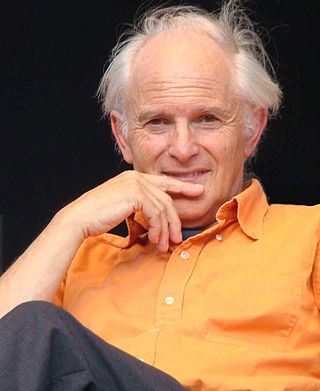
Sir Harold Walter Kroto, known as Harry Kroto, was an English chemist. He shared the 1996 Nobel Prize in Chemistry with Robert Curl and Richard Smalley for their discovery of fullerenes. He was the recipient of many other honors and awards.
The Fraunhofer Society is a German research organization with 76 institutes spread throughout Germany, each focusing on different fields of applied science. With some 29,000 employees, mainly scientists and engineers, and with an annual research budget of about €2.8 billion, it is the biggest organization for applied research and development services in Europe.

The Gdańsk University of Technology is a technical university in the Wrzeszcz borough of Gdańsk, and one of the oldest universities in Poland. It has eight faculties and with 41 fields of study and more than 18 thousand undergraduate, as well as about 626 doctoral students. It employs 2768 people, including 1313 academic teachers.

Adlershof is a locality in the borough Treptow-Köpenick of Berlin, Germany.
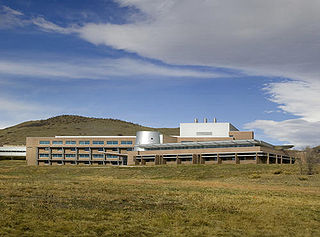
The National Renewable Energy Laboratory (NREL) in the US specializes in the research and development of renewable energy, energy efficiency, energy systems integration, and sustainable transportation. NREL is a federally funded research and development center sponsored by the Department of Energy and operated by the Alliance for Sustainable Energy, a joint venture between MRIGlobal and Battelle. Located in Golden, Colorado, NREL is home to the National Center for Photovoltaics, the National Bioenergy Center, and the National Wind Technology Center.
The Engineering and Physical Sciences Research Council (EPSRC) is a British Research Council that provides government funding for grants to undertake research and postgraduate degrees in engineering and the physical sciences, mainly to universities in the United Kingdom. EPSRC research areas include mathematics, physics, chemistry, artificial intelligence and computer science, but exclude particle physics, nuclear physics, space science and astronomy. Since 2018 it has been part of UK Research and Innovation, which is funded through the Department for Business, Energy and Industrial Strategy.

In 2008, Sheffield ranked among the top 10 UK cities as a business location and aims to regenerate itself as a modern technology and sports based city. Sheffield has an international reputation for metallurgy and steel-making. It was this industry that established it as one of England's main industrial cities during the 18th, 19th and 20th centuries. This industry used Sheffield's unique combination of local Iron, Coal and water power supplied by the local rivers. This fuelled a massive growth in the city's population that expanded from 60,995 in 1801 to a peak of 577,050 in 1951. However, due to increasing competition from imports, it has seen a decline in heavy engineering industries since the 1960s, which has forced the sector to streamline its operations and lay off the majority of the local employment. The steel industry now concentrates on more specialist steel-making and, in 2005, produced more steel per year by value than at any other time in its history. The industry is now less noticeable as it has become highly automated and employs far fewer staff than in the past. However a small number of skilled industrial automation engineers still thrive in it. Today the economy is worth over £7 billion a year.

The Framework Programmes for Research and Technological Development, also called Framework Programmes or abbreviated FP1 to FP9, are funding programmes created by the European Union/European Commission to support and foster research in the European Research Area (ERA). Starting in 2014, the funding programmes were named Horizon.
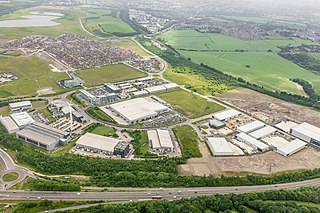
The Advanced Manufacturing Park (AMP) is a 150-acre (61 ha) manufacturing technology park in Waverley, Rotherham, South Yorkshire, England. It was partly funded by the European Regional Development Fund, and developed by the Harworth Group, previously the property development wing of UK Coal, on reclaimed opencast coal mine land close to the site of the battle of Orgreave.
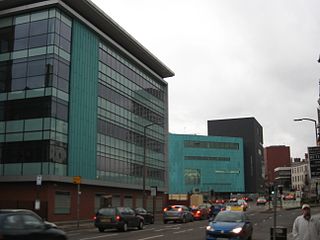
The Ella Armitage Building, formerly known as the Sheffield Bioincubator is a former innovation centre in Sheffield, England. It contained offices and laboratories for small and medium enterprises in emerging technology and related areas and with links to the University of Sheffield. The building is owned, managed and run by the University of Sheffield. The building was closed to commercial activity in 2017 and was incorporated into the University of Sheffield's teaching and research space and renamed the Ella Armitage Building. The building houses the modern languages teaching centre, Grantham Centre and the Department of Archeology.
Narec, since 2014 known as the National Renewable Energy Centre, is a part of the Offshore Renewable Energy (ORE) Catapult, a British technology innovation and research centre for offshore wind power, wave energy, tidal energy and low carbon technologies. ORE Catapult's head office is in Glasgow, Scotland. The centre operates multi-purpose offshore renewable energy test and demonstration facilities. It is similar to other centres, such as NREL in the US and National Centre for Renewable Energies (CENER) in Spain. The National Renewable Energy Centre is based in Blyth, Northumberland.

Marine energy or marine power refers to the energy carried by ocean waves, tides, salinity, and ocean temperature differences. The movement of water in the world's oceans creates a vast store of kinetic energy, or energy in motion. Some of this energy can be harnessed to generate electricity to power homes, transport and industries.

BioCity Nottingham is a bioscience science park in central Nottingham in the United Kingdom. It is the UK's largest bioscience innovation and incubation centre.
Donal Donat Conor Bradley is the Vice President for Research at King Abdullah University of Science and Technology (KAUST), Saudi Arabia. From 2015 until 2019, he was head of the Mathematical, Physical and Life Sciences Division of the University of Oxford and a Professor of Engineering Science and Physics at Jesus College, Oxford. From 2006 to 2015, he was the Lee-Lucas Professor of Experimental Physics at Imperial College London. He was the founding director of the Centre for Plastic Electronics and served as vice-provost for research at the college.
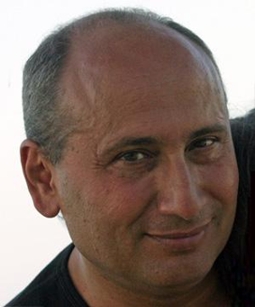
Konstantinos Fostiropoulos is a Greek physicist who has been working in Germany in the areas nano-materials, solid-state physics, molecular physics, astrophysics, and thermodynamics. From 2003 to 2016 he has been founder and head of the Organic Solar Cells Group at the Institute Heterogeneous Materials Systems within the Helmholtz-Zentrum Berlin. His scientific works include novel energy materials and photovoltaic device concepts, carbon clusters in the Interstellar Medium, and intermolecular forces of real gases.
Vortex Bladeless Ltd. is a Spanish technology startup company that is developing a type of wind power generator without rotating blades or lubricants, unlike the more common wind turbines. Power is produced from resonant vibrations produced when wind passes the turbine and is deflected into vortices in a process called vortex shedding.

Andhra Pradesh MedTech Zone(AMTZ) is a medical technology park with Common Manufacturing Facilities & Common Scientific Facilities that include specialized laboratories, warehousing and testing centers such as the Center for Electromagnetic compatibility and safety testing, Center for Biomaterial Testing, Center for 3-D printing, Centers for Lasers, MRI Magnets, Gamma Irradiation, Molds, and many other industrial service centers.

The Henry Royce Institute is the UK’s national institute for advanced materials research and innovation. Its vision is to identify challenges and to stimulate innovation in advanced materials research to support sustainable growth and development. Royce aims to be a "single front door" to the UK’s materials research community. Its stated mission is to “support world-recognised excellence in UK materials research, accelerating commercial exploitation of innovations, and delivering positive economic and societal impact for the UK.”

Infineon Technologies Austria is a group subsidiary of Infineon Technologies. It employs 3785 people in around 60 countries with a large proportion in research. In 2017 the company made a turnover of €2.5 billion. Its headquarters are in Villach, Austria.















